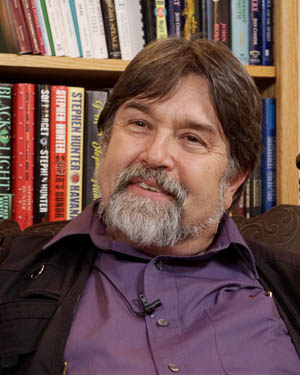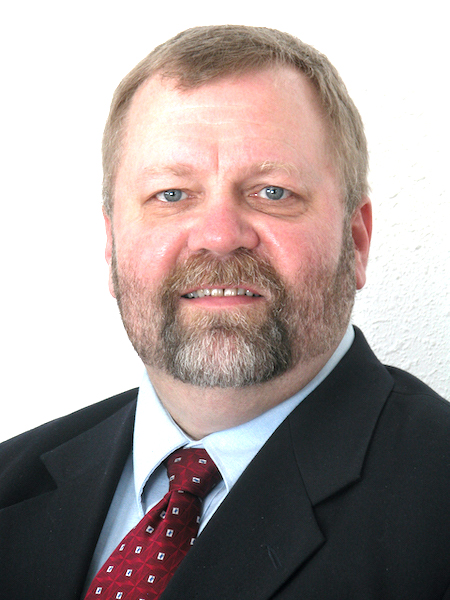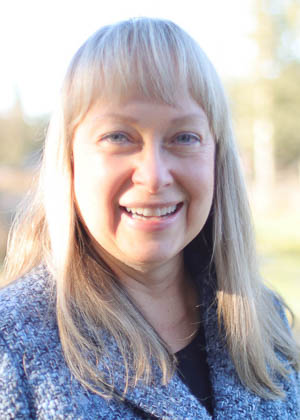Including ...Defending Against First Degree Murder Charges • Rallies, Riots and Protests Part 1 • Network Membership and Legal Defense Fund Growth • President’s Message • Vice President’s Message • Attorney Question • Making Introductions • Book Review • Editor's Notebook • About this Journal
Get eJournal PDF: click here
Defending Against First Degree Murder Charges
An Interview with Attorney Edward Levy
 Interview by Gila Hayes
Interview by Gila Hayes
This time of year we routinely share reports with members about the Network’s efforts in the year just past. Financial demands on the Legal Defense Fund were moderate in 2020. We drew on the Fund three times during the year, but its most serious use was in mid-August of 2020, when a member shot and killed a man in defense of an intimate partner in her apartment.
As members know, we go to any extreme necessary to protect member privacy, so many of the member-involved cases for which the legal defense is paid from the Legal Defense Fund are only mentioned in the briefest of outlines. We are driven to make sure that any mention given a member’s use of force never starts the ball rolling for a civil lawsuit or gets criminal charges refiled. Thus, our report focuses on the legal battle as seen through the eyes of the attorney working the case.
Because the member we assisted in August did not have an attorney, his initial call launched, amongst other steps, an all-out drive to engage one of the Network affiliated attorneys in his area. His call came in on Friday afternoon at the height of vacation season, so several of the affiliated attorneys we contacted told us they were out of state. After a flurry of calls, Network President Marty Hayes spoke with attorney Edward Levy (pictured above, right) of Denver, CO, who agreed to go meet with the member.
Rallies, Protests and Riots – Part 1
An Interview with Marc MacYoung
Interview by Gila Hayes
Throughout the summer and now moving toward Inauguration Day and other potential flashpoints, Network members are increasingly concerned about mob violence coming into their neighborhoods and work locations. Most have never had to deal with multiple attackers to say nothing of mobs. Violence dynamics expert Marc MacYoung (pictured above, right) has both an experiential understanding about riots (from being an L.A. resident during the 1992 riots) and the ability to teach about it through his work as an expert witness distilling research into explanations about violent group behavior for defense attorneys, juries and judges.
I spoke with MacYoung recently, wanting to understand more about indications that crowds are becoming violent and how to avoid getting caught up in it. He explained much about the current situation and suggested options for escaping a riot-torn area.
We share the conversation here so our members can develop survival strategies to avoid getting caught up in the violence. Let’s switch now to Q & A to learn from MacYoung in his own words.
Network Membership and Legal Defense Fund Growth
 With the violent riots, civil unrest, public dissatisfaction, social hostility that characterized the year 2020, you might think that calls from Network members requesting funding for legal representation after self defense would have increased. To the contrary, frequency of members’ self defense incidents remained about the same. Three cases in 2020 entailed funding requested and provided for legal defense after a defensive display of a firearm, a gun drawn in preparation to fend off a charging dog and one fatality shooting. Several other incidents occurred and members called and discussed their legal representation needs with Network President Marty Hayes, but these situations did not result in legal problems for the members so no attorney fees were needed.
With the violent riots, civil unrest, public dissatisfaction, social hostility that characterized the year 2020, you might think that calls from Network members requesting funding for legal representation after self defense would have increased. To the contrary, frequency of members’ self defense incidents remained about the same. Three cases in 2020 entailed funding requested and provided for legal defense after a defensive display of a firearm, a gun drawn in preparation to fend off a charging dog and one fatality shooting. Several other incidents occurred and members called and discussed their legal representation needs with Network President Marty Hayes, but these situations did not result in legal problems for the members so no attorney fees were needed.
When a Network member uses force in legitimate self defense, the Network pays attorneys, experts, private investigators and other related legal defense expenses to defend against criminal charges or civil litigation seeking damages. The case of the member involved in the fatality shooting illustrates the value of immediate funding to get a skilled attorney on the case quickly, determining and identifying the facts that show the justification for the use of force and bringing that truth to the attention of prosecutors and district attorneys to influence charging decisions, while concurrently amassing the evidence needed to defend the use of force at trial, if necessary. The work of a Colorado attorney on our member’s behalf, reviewed in the foregoing article, illustrates that vital mission.
President’s Message
 Looking Back
Looking Back
by Marty Hayes, J.D.
The Network is entering its 14th year, and when I think about it, I am literally astonished! First off, where did the time go? Seems like it was yesterday that Vincent, Gila and I sat in the classroom of Firearms Academy of Seattle and ideated how to form this Network and decide what we needed to do to move forward. It started out as a part-time endeavor that seemed like a good idea at the time. Within a couple of years, we realized that the Network could be so beneficial to so many people, and apparently others realized the same thing, because we began seeing others start competing organizations. That resulted in our upping our game in order to compete in this fledgling industry. Looking back, it all seems like a whirlwind.
Vice President’s Message
 Growing the Legal Defense Fund
Growing the Legal Defense Fund
by J. Vincent Shuck
The Network’s Legal Defense Fund has grown this past year, thanks to our members’ dues allocation, separate member and nonmember donations directed to the Fund and finally, corporate support. For clarification to our many new members and perhaps as a good reminder to our long-term membership, the Legal Defense Fund was created by the Network to accrue funds to provide financial assistance to a member for legal fees and bail support after a self-defense incident.
Attorney Question of the Month
 In our December online journal internationally-known author and instructor Massad Ayoob gave an instructional interview about how making an affirmative defense in court to explain why one used force in self defense shifts the burden of proof.
In our December online journal internationally-known author and instructor Massad Ayoob gave an instructional interview about how making an affirmative defense in court to explain why one used force in self defense shifts the burden of proof.
Because courts and laws vary considerably from state to state, we wanted to drill down into this topic further and reached out to our Affiliated Attorneys for assistance. We asked our affiliated attorneys what is involved in arguing self defense to the courts in their state. Their comments to the below question follow:
What is the process in your state for presenting an affirmative defense of use of force in self defense?
What are the potential impediments that may result in a judge denying a self-defense argument?
If denied the ability to argue self defense, what steps would you take to get the best outcome for your client?
Making Introductions
 Network members have recently been enjoying the benefits of behind-the-scenes professional assistance when they call for help with website log in problems or to explore why they haven’t been getting our monthly member bulk email. In November, the Network availed itself of the outstanding opportunity to hire an experienced information technology professional. I’d known John Murray for years, having contracted with him for IT services he performed as a second job. Now, with John’s move over to full time employment at the Network, we are taking full advantage of his various skills and so are Network members. It is our pleasure to introduce this newest staff member to our Network family members so that there’s a face with the assistance you might call on him to provide.
Network members have recently been enjoying the benefits of behind-the-scenes professional assistance when they call for help with website log in problems or to explore why they haven’t been getting our monthly member bulk email. In November, the Network availed itself of the outstanding opportunity to hire an experienced information technology professional. I’d known John Murray for years, having contracted with him for IT services he performed as a second job. Now, with John’s move over to full time employment at the Network, we are taking full advantage of his various skills and so are Network members. It is our pleasure to introduce this newest staff member to our Network family members so that there’s a face with the assistance you might call on him to provide.
--Gila Hayes
Hello everyone! I’d like to introduce myself to all in my new role as IT director for the Network. A bit about me: I’ve been involved with technology since the late 60’s, first in audio, transitioning to television broadcast engineering, then computing/networking in the late 80’s.
Book Review
 The Cadaver King and the Country Dentist
The Cadaver King and the Country Dentist
A True Story of Injustice in the American South
by Radley Balko and Tucker Carrington
ISBN-13: 9781610396912
Hardcover $28
ISBN-13: 9781610396929
eBook $12.99
Reviewed by Gila Hayes
The book I read in December is a report about two men who, co-author investigative journalist Radley Balko writes, “dominated the Mississippi death investigation system for 20 years.” You’ll note the word “report:” the word “story” suggests entertainment, and this book is serious coverage of a very real problem. It is also about two innocent men who were swept up in the 1990s campaigns for law and order, explains the co-author Tucker Carrington, head of the Innocence Project at the University of Mississippi School of Law.
Editor's Notebook
 The Times, They Are a’Changing...
The Times, They Are a’Changing...
by Gila Hayes
...and not necessarily for the better.
I read with consternation reports about the Columbus, Ohio, man shot early in December by a sheriff’s deputy assigned to a US Marshal’s fugitive task force. The story contained a lot of tragic elements – things that could trip up any one of us. Not surprisingly, those learning points were soon eclipsed by protests about racism, obliterating any chance to honestly consider factors leading up to the death of 23-year-old Casey Goodson. Because it has been politicized, it seems unlikely we, the general public, will ever know the truth about the minutes preceding the shooting. Frankly, since we will probably never get the truth, I am more interested in lessons we can gather from what is known.
Initial news reports indicated that Goodson was returning from an appointment with his dentist, but that the pistol he was licensed to carry concealed, had been seen prior to the shooting. Multiple variations of reports of the circumstances surrounding developing concern over “a man with a gun” have been reported and I doubt we’ll ever know what initially caught the deputy’s eye. With tensions running high, being the subject of a “man with a gun” complaint is, in my opinion, a Very Bad Thing.
About this Journal

The eJournal of the Armed Citizens’ Legal Defense Network, Inc. is published monthly on the Network’s website at http://armedcitizensnetwork.org/our-journal. Content is copyrighted by the Armed Citizens’ Legal Defense Network, Inc.
Do not mistake information presented in this online publication for legal advice; it is not. The Network strives to assure that information published in this journal is both accurate and useful. Reader, it is your responsibility to consult your own attorney to receive professional assurance that this information and your interpretation or understanding of it is accurate, complete and appropriate with respect to your particular situation.
In addition, material presented in our opinion columns is entirely the opinion of the bylined author, and is intended to provoke thought and discussion among readers.
